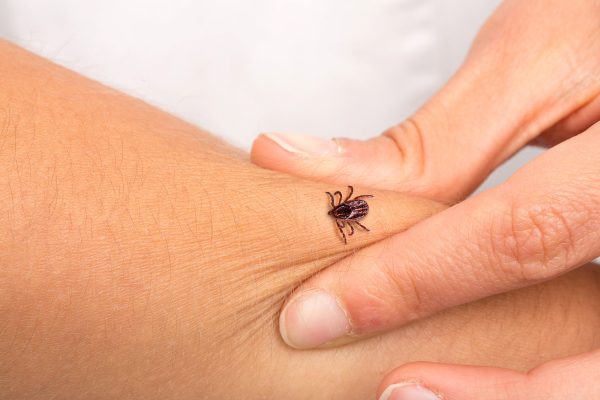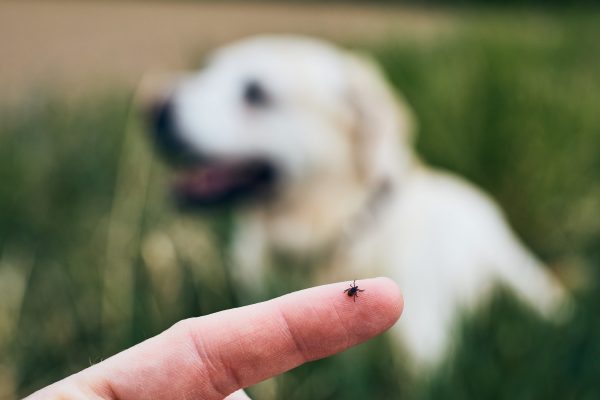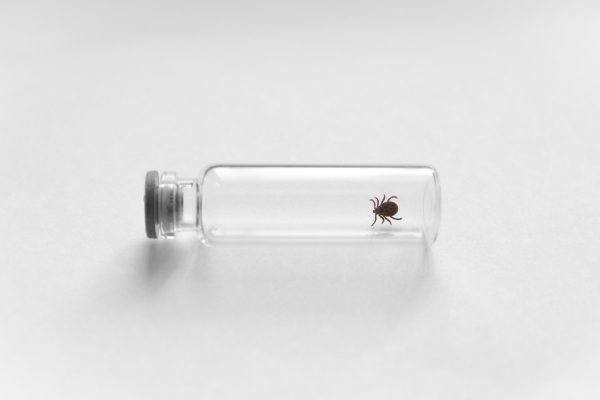WAVE 1 is wearable frequency technology based upon proven bioenergetic science to help lessen the devastating symptoms of Lyme disease and co-infections. Each year, there are approximately 300,000 cases of Lyme disease reported in the United States. This number could be higher than expected as there are cases where people never develop symptoms or are misdiagnosed. Lyme disease can also be challenging to diagnose, as its symptoms can mimic over 300 other illnesses.

What is Lyme Disease?
Lyme disease is classified as an infectious disease coming from the bacterium Borrelia burgdorferi. Lyme disease is a severe illness, and patients should see a doctor if they think they may have been exposed to the bacterium.
Symptoms of Lyme Disease
Lyme disease can have various symptoms, making it difficult to diagnose. The most common symptom is a bulls-eye rash, which occurs in about 70-80% of cases. Other symptoms may include fever, chills, fatigue, headache, and muscle and joint pain. Lyme disease can also cause neurological problems, such as Bell’s palsy (paralysis of the facial muscles) and meningitis (defined as the swelling of the membranes around the spinal cord or the brain).
If left untreated, Lyme disease can lead to severe complications, such as joint damage and heart problems.
WAVE 1: Technology To Support People Suffering From Lyme Disease Symptoms
When a body is disrupted by disease, emotional trauma, or injury, cellular communication within the body is not working at its best. Proper cell function is essential for promoting balance and recovery from disease. WAVE 1 helps to restore cellular communication by supporting the immune system with its exclusive issue-based wellness frequencies. Learn more about WAVE 1 and its benefits.
How to Prevent Tick Bites on People
- Know where to expect ticks. They live in grassy, wooded, brushy areas. At times, they also live on animals. Spending time outside also increases the probability of being in close contact with ticks especially if you are camping, gardening, or hunting. Many people get ticks in their yards or neighborhood.
- Wear the right clothing. Wearing long pants and long-sleeved shirts creates a barrier between your skin and ticks. Wear light-colored clothing to see ticks crawling on you more easily. Tuck shirts into pants and pant legs into socks or boots
- Use EPA-registered repellents. Repellents help keep ticks away from your skin. Always follow product instructions. They should be used over the entire body.
- Check for ticks daily. Ticks can attach to any body part but are often found in hard-to-see areas like the groin, armpits, and scalp. Use a hand-held or full-length mirror to check all parts of your body for ticks after being outdoors. Parents should check their children for ticks.
- Remove ticks promptly. Ticks should be removed quickly to prevent them from attaching and transmitting Lyme disease bacteria. The best method to remove a tick is with fine-tipped tweezers. Grasp the tick and then pull upward. Make sure your hands are steady and apply even pressure.
Once you’re Inside the Home

- Check your clothing for ticks. Ticks can attach to your clothing outdoors and then crawl onto your skin later. Any time you come indoors, put your clothes in the dryer on high heat for at least 10 minutes to kill any ticks.
- Shower soon after coming indoors. It is encouraged to shower within two hours upon arriving at your house to reduce the risk of Lyme disease. This gives you a chance to wash off unattached ticks and find any ticks that may have crawled onto your body.
- Check your gear and equipment. Ticks can attach to sporting equipment, camping gear, or work tools and be brought into the home. Ticks can also fall off pets and attach to furniture or carpeting, where they can crawl onto a person. Be sure to check gear and equipment before bringing it into your home.
- Check your entire body. Have a full body scan once you get home to see if any body part is potentially tick-infested. Use a full-length mirror to check your knees, hair, arms, legs, waist, and belly button.

How to Prevent Tick Bites on Pets
Talk to your veterinarian. Your veterinarian can recommend the best tick prevention products based on your pet’s age, health, lifestyle, and level of tick exposure.
Use tick-prevention products on pets. Many products are available to prevent ticks on pets, including spot-on treatments, collars, shampoos, and oral options. Be sure to follow the product instructions carefully. Keep ticks off your property. Ticks live in grassy, brushy, or wooded areas. To help keep ticks away from your home:
- Mow your lawn daily
- Cut tall grass and brush around your home
- Pile wood neatly and in a dry area (ticks like cool, dark places)
- Keep decks, patio, decks, and playground away from yard edges and trees
- Discourage wildlife like deer, raccoons, and opossums by using fencing or clearing vegetation
Conclusion
Ticks are small, blood-sucking parasites found in wooded or grassy areas. They can also live on animals, and spending time outdoors increases the risk of being bitten by a tick. Ticks can transmit Lyme disease, so it is important to take steps to prevent that from happening. But if you have Lyme disease, you don’t have to worry anymore as there is already a solution to your problem. Using WAVE1 will help you lessen the debilitating symptoms of Lyme disease, allow you to get back on track, and continue to do the things you enjoy!



